There’s a fair bit of Demon Lord hiding inside PunkApocalyptic. If the engine works, it works. No point in reinventing the beer can. Now are there changes? You bet. Of course there are. My job as the designer is to make the system support the setting and that’s what I set out to do. I’ll talk about some changes in a bit, but I wanted to give you the chapter opening first along with the basics about doing stuff in the game.
The Rules
This chapter covers all the rules you needed to play this game. The main thing to keep in mind is that this is a game focused on telling stories and you’re expected to use your imagination to make it work. Most of the time, what you want your character to do in the game simply happens without you having to refer to the rules at all. Your character might walk down a road, crack open a can of beets and start eating, or bed down inside of an old dumpster where they’ll be safe from the feral dogs sniffing around for easy meat. These things usually happen without you having to pick up your dice or make a note on your character sheet. They just happen. And that’s the way it’s supposed to be, damnit.
As much as I would like to tell you to toss the rules out the window and have fun telling stories set in a weird post-apocalyptic wasteland, we both know that some stuff can’t be solved by talking and hopeful thoughts. This is a game, after all, and games have rules. The difference is that these rules won’t handcuff you or dictate how you play: they help you when you get stuck in the story because you’re not sure what should happen next. And so, here we are, me writing an introduction to another rules chapter and you reading it.
Before we dive into the nitty-gritty about the rules, I want to remind you that everything in this chapter relies on common sense and your responsibility to use it. If you can solve a scene without having to resort to rolling dice or referencing something on your sheet, don’t roll the dice and don’t bother with your sheet.
For example, unless you character has some sort of weird-ass mutation that lets him or her walk through walls, your character’s going to bounce off that wall when you try it. Dumbass. You don’t need a rule to tell you this. Similarly, you can’t shoot the moon with your rifle from the surface of the Earth, swim up a waterfall, or do any of the other goofy shit that might be rattling around in your head right now. Likewise, you don’t need rules for getting pregnant, pooping, walking around, or anything else that you’d expect a normal, capable individual to be able to pull off, so you’re not going to find that shit in this chapter either.
Although, your character being knocked-up in this god-awful world might be pretty fucking interesting…
What you will find are things to help you through the tough spots in the story. Does your shot take off the mutant’s head? Can you kick down the door? Can you get away from the gangers? You need these things to tell the story. So, pay attention, think about what makes sense for the story, but don’t sweat the small shit. Make sense? Good. Let’s do this thing.
Doing Stuff
As a player, you decide on the kinds of stuff your character does in the game. Sometimes, you tell the Gamemaster what you want your character to do, and other times you tell the GM how your character reacts to a situation. Whenever you describe something your character does in the game, the GM determines whether the thing you attempt happens (success), doesn’t happen (failure), or might happen (decided by an attribute roll).
Success
A success means that the activity you described more or less happens as you described it. You might succeed from describing something just about any asshole can pull off or you might have gotten a success on an attribute roll that only the most special fuckers make.
The GM might decide you need multiple successes to do some activity. This can happen if you’re fighting against the venom coursing through your veins or you’re trying to hotwire an old car. In these and other situations, you just keep trying to get successes until you get the required number. Normally, you don’t have to get them all in a row. You can fuck around a bit in between your successes and still succeed once you get the last one. Rolling failures while attempting multiple successes, however, will probably result in some kind of setback, usually bad. Either way, the GM will keep track of the successes and failures. Good luck.
Failure
Failure means you suck.
Nah, just kidding. Failure means the thing you wanted to do doesn’t happen. It might not happen because you tried to do something ridiculous or impossible and the GM just shut that noise down by telling you no.
Or—and more likely since you’re a gamer of discerning taste and culture—you got a failure from a particularly shitty roll.
When you fail, you might be able to try again or you might not, depending. If you’re rolling to see if you can pick a lock on a door and it turns out you can’t, you can’t. If you’re trying to smack some fucker with a crowbar and you get a failure, you can swing again next time you have a chance.
Attribute Rolls
The rules sometimes tell you to make an attribute roll to see if you can do a thing. The GM might also ask for a roll. In either case, you figure out if you can do the thing by roll a d20.
Attribute rolls are called what they are because they all use one of your attributes. The rules typically tell you what attribute to use or the GM determines.
There are two kinds of attribute rolls: basic rolls and rolls to hit. You use basic rolls to see if you can do something and rolls to hit when you would see if you can do something to someone else. So, if you want to shake off being drunk, you’d make a basic roll. If you wanted to shoot some asshole through a window, you’d roll to hit. Make sense?
To make a basic roll or a roll to hit, just follow these steps.
Roll the Die: Roll a d20.
Add Modifiers: Add to the number you rolled the modifier from the attribute to that best applies to the activity you are attempting. The rules or the GM tell you which attribute to use.
Apply Other Adjustments: Add any other adjustments to the die roll, such as bonuses or penalties, assetsor complications.
Find the Target Number: If you’re making a basic roll, the target number is always 10. If you’re rolling to hit, the target number is the target’s Defense score, or the score of the attribute you would hit.
Determine the Result: Compare the total of all the numbers to the target number. If the total is equal to or greater than the target number, the result is a success. If the total is less than the target number, the result is a failure.
Adjusting Rolls
Circumstances, talents, spells, and other effects can apply adjustments to your attribute rolls. Adjustments are bonuses and penalties or assets and complications.
Bonuses and Penalties
Some shit might grant you a bonus or impose a penalty on a roll you make. Bonuses represent advantages, while penalties describe disadvantages. A bonus is always a positive (+) number, while a penalty is always a negative (–) number. In both cases, you add all the bonuses and penalties that apply to the roll, provided those bonuses and penalties each come from different sources. So, if you have –1 penalty to a roll of a d20 and you roll a 5, the total would be 4. If you have a +2 bonus to a roll and a –3 penalty, you would add –1 to your roll.
Assets and Complications
Many effects can improve or worsen your chances when you make an attribute roll. You might have a talent that makes performing a task easier, or be afflicted by a disease or poison, which just fucking sucks all the way around. Positive circumstances grant one or more assets to the roll, while negative circumstances impose one or more complications.
Assets improve your d20 rolls and one or more assets might apply to a given roll. For each asset, you roll a d6 and then add the highest number rolled on all the asset dice to the d20 roll. For example, if you roll a d20 with 3 assets, you would roll 3d6. If the dice come up as 3, 5, and 2, you would add 5 to the d20 roll since 5 is the highest number.
Complications hinder your rolls similarly and, like assets, one will apply to a given roll. For each complication, you roll a d6 and then subtract the highest number rolled on all the complication dice from the d20 roll. For example, if you roll a d20 with 2 complications, you would roll 2d6. If the dice come up as 4 and 1, you would subtract 4 from the d20 roll since 4 is the highest number.
Assets and complications cancel each other out, die for die, so you never roll them both at the same time. So, if you have 3 assets and 1 complication that apply to a particular roll, you’d make the roll with 2 assets (1 of the complications cancels 1 of the assets). Similarly, if 2 assets and 4 complications apply to the roll, you would make the roll with 2 complications since 2 assets would cancel out 2 complications. Savvy? Good.
Stacking Assets and Complications
All assets granted and complications imposed apply to a roll provided those assets and complications come from different sources. For example, if you have a talent that grants you 1 asset and a different talent that also grants you 1 asset, you’d make the roll with 2 assets. If, however, you are sickened after being hit by an arrow smeared in poison and then get sickened again after being pumped full of venom by a nasty mutant, you’d only make your roll with 1 complication from the condition of being sickened since the source of the complications come from the same affliction, “sickened.”
Luck
Your characters are a cut above the rest of the fuckers in the world. Your characters possess unique talents, special training, secret knowledge, and other traits to help you survive in the Wasteland. In addition to your capabilities, your characters also have more luck than do others, which helps you escape from deadly situations, avoid failure, and turn what would be a glancing blow into a deadly one.
However, as lucky as you and your friends can be, your good fortune is not without its limits and sometimes, when you need it most, your luck might just run out.
The game tracks your luck with luck tokens. At the start of each adventure, the GM secretly determines how many luck tokens your team has by rolling 1d6, adding the number of your team’s completed missions to the roll. The GM keeps the total number of tokens available a secret from you, so you never know when your luck will run out. Fun, right?
At any time, you or any other player can announce that you’re spending a luck token. If the GM tells you there are no tokens left to spend, you are quite literally shit out of luck. If there is one to spend, you can use it to produce any one of the following effects.
Grant Boons: You can make an attribute roll with 2 boons. You can decide to use luck after you have rolled and after the GM has told you the outcome of the roll.
Heal Damage: You allow one character to heal 2d6 damage.
Maximize Damage: You cause one creature that would take damage to take the maximum amount of damage. You can decide to use luck after the amount of damage has been determined.
Using Attributes
Making an attribute roll involves using one of your eight attributes. The rules and the GM determine which attribute applies, but the following guidelines give you an idea how you might use them.
Muscles
Muscles describes physical might, athletic ability, and brawn.
Score: Your Muscles score is the target number for any effect that would force you to move, restrain you, or prevent you from exerting force.
Attribute Rolls: You make Muscles rolls when you attack with a melee weapon, throw a weapon, use brute force to break an object, to overpower another creature in some way. You also make Muscle rolls when you would perform an activity related to athleticism such as when you would climb or swim.
Meat
Meat describes durability, overall fitness, and the ability to tolerate pain and injury.
Score: Your Meat score is the target number for any effect that would directly harm your body.
Attribute Rolls: You make Meat rolls when you would exert yourself for long periods, withstand the effects of hunger, thirst, and exhaustion, and when you would fight off the effects of disease and poison.
Hands
Hands describes balance, manual dexterity, aim, poise, and steadiness.
Score: Your Hands score is the target number for any effect that would unbalance you.
Attribute Rolls: You roll Hands when you would attack with ranged weapons and when you attack with some melee weapons. You might also make Hands rolls when you would perform some sleight of hand or other physical trick that involves dexterity.
You also make Hands rolls when you would move across many forms of challenging terrain, squeeze through a tight place, escape bonds, or perform a task that involves steady hands and dexterity such as picking a lock or disarming a trap.
Feet
Feet describes reflexes, swiftness, and ability to escape harm.
Score: Your Feet is the target number for attacks made against you that you could possibly dodge.
Attribute Rolls: You make Feet rolls when you would jump, leap, or perform any other task that involves speed. You also make Feet rolls to escape danger when caught in an explosion or to avoid a sudden danger, as well as when you would pursue a fleeing creature or escape your pursuers.
Brains
Brains describes cunning, wit, memory, knowledge, and intelligence.
Score: Your Brains score is the target number for any effect that would deceive or confuse you.
Attribute Rolls: You make Brains rolls when you would recall obscure information, use logic to solve a problem, or perform any other activity that involves knowledge. You also make Brains rolls when attempting to outwit or deceive another creature, and when you use certain mental mutations.
Eyes
Eyes describes the keenness of all your senses, such as sight, hearing, touch, smell, and so on.
Score: Your Eyes score is the target number for any effect that would deceive your senses.
Attribute Rolls: You make Eyes rolls when you would listen for sounds or notice details in your environment. You also make these rolls when you try to find a hidden creature or recognize an illusion for what it is.
Mouth
Mouth describes strength of personality, insight, and the ability to communicate with others.
Score: Your Mouth score is the target number for any effect that would alter your personality or take control of your body.
Attribute Rolls: You roll Mouth when you would interact socially with other creatures in order to befriend or threaten. You might also make Mouth rolls when you use and resist certain mental mutations.
Guts
Guts describes determination, courage, discipline, and willpower.
Score: Your Guts score is the target number for any effect that would erode your confidence.
Attribute Rolls: You make Guts rolls when you would use determination to overcome a challenge, when you would fight to stay alive, to overcome stress, and maintain your sanity in the face of horrifying situations. You also roll Guts when you would use certain mental mutations.
Defense
Defense describes how hard you are to strike with a weapon or some other object. Your Defense score is the target number for rolls made to attack you with a weapon.
Health
Most people and creatures have Health scores. The score tells you the most damage it can take before becoming incapacitatedor destroyed. A creature or object’s Health score can benefit from bonuses, which means it can take more damage, or suffer from penalties, which means it can take less damage. If a penalty reduces a creature’s Health score to a number equal to or lower than its damage total, the creature becomes incapacitated, while an object is destroyed. A creature whose Health drops to 0 dies, while an object whose Health drops to 0 is destroyed.
Grit
Grit describes your ability to recover from injuries. You can use an action to recover, which lets you spend grit to heal damage. You might also lose grit when you start dying or you suffer from hunger, thirst, and exhaustion.
Speed
Your Speed score tells you how far, in yards, you can move on your turn in combat. Various effects can increase or decrease your Speed score.
Size and Reach
Everything has a size score, which tells you about how much horizontal physical space it takes up. Most player characters are size 1, meaning they occupy a square of space, 1 yard on a side. Smaller creatures might be size 1/2 while larger ones could be size 2, 3, or even larger. Size does not account for height, which varies a great deal.
Size also usually describes how far outside of your space you can reach. Your reach equals your size. Some creatures have a longer reach due to their anatomy.
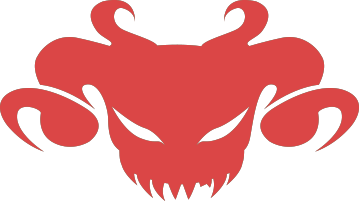


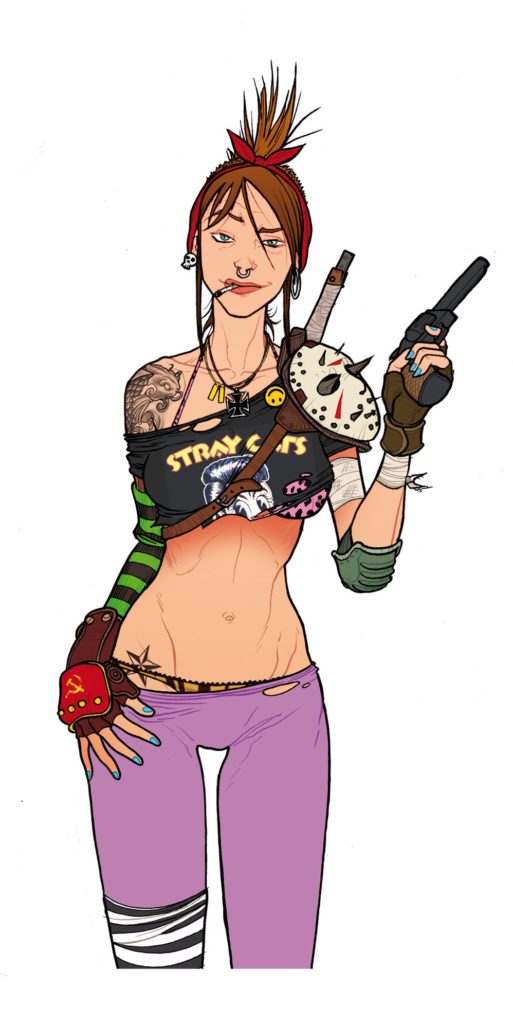
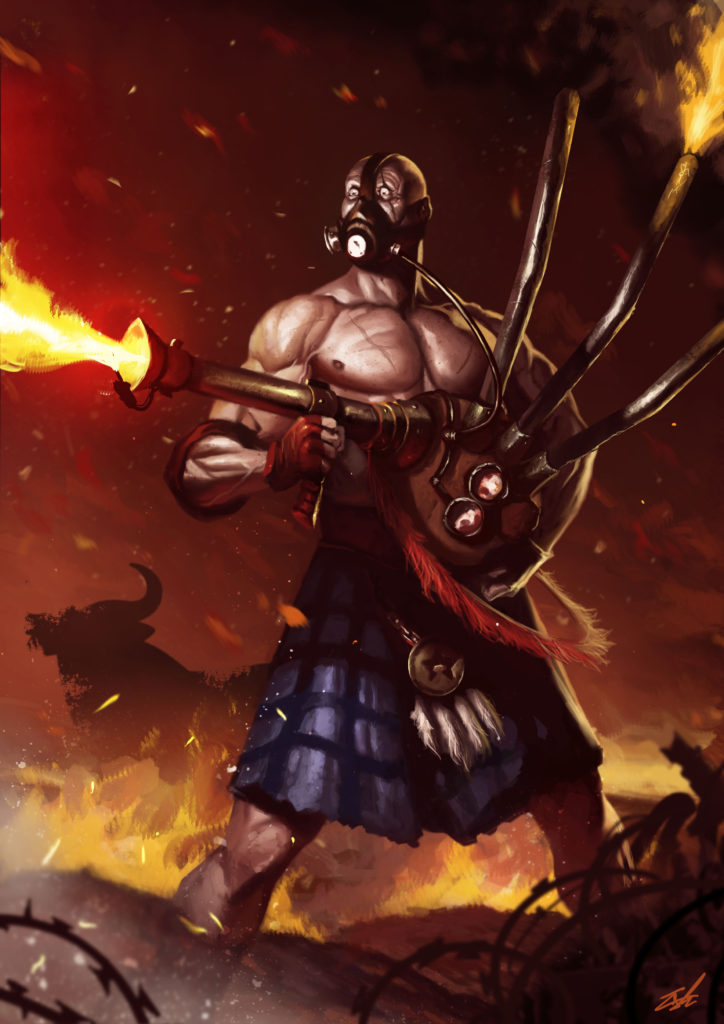
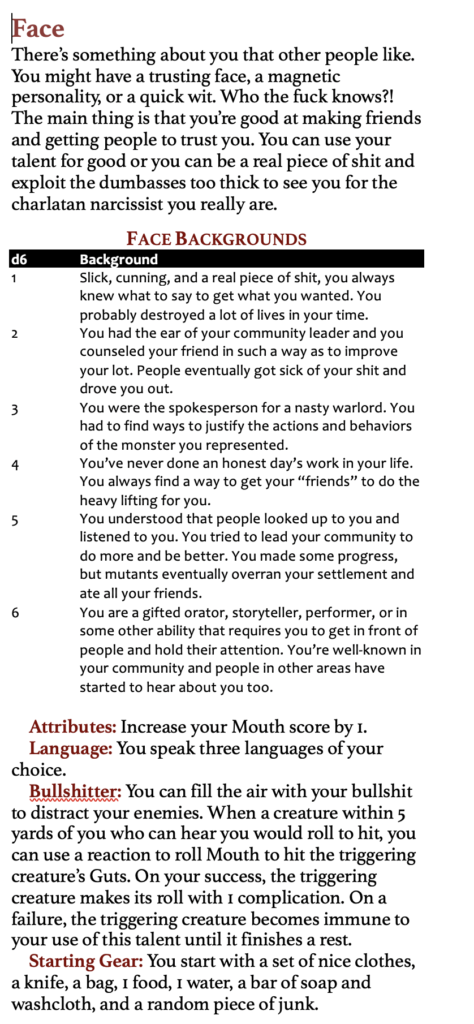
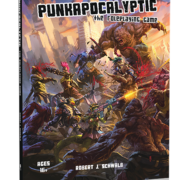 2020
2020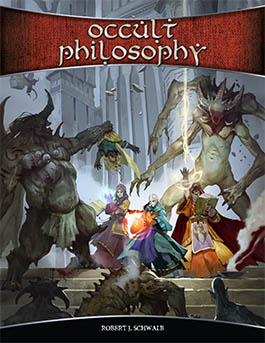 I’m thrilled to announce that the Kickstarter campaign for Occult Philosophy is now live! We’re running the campaign to raise funds to produce a massive tome filled with magic and mayhem. In this book, you find hundreds of spells, dozens of paths, and creatures to do your bidding. A massive expansion to the magic system, this books a must-have product for your Shadow of the Demon Lord campaigns. Whether you’re a veteran of the game or brand new to the wonder and madness of the SotDL, this is a perfect opportunity to jump in and embrace the horror. Please check out and support out campaign
I’m thrilled to announce that the Kickstarter campaign for Occult Philosophy is now live! We’re running the campaign to raise funds to produce a massive tome filled with magic and mayhem. In this book, you find hundreds of spells, dozens of paths, and creatures to do your bidding. A massive expansion to the magic system, this books a must-have product for your Shadow of the Demon Lord campaigns. Whether you’re a veteran of the game or brand new to the wonder and madness of the SotDL, this is a perfect opportunity to jump in and embrace the horror. Please check out and support out campaign